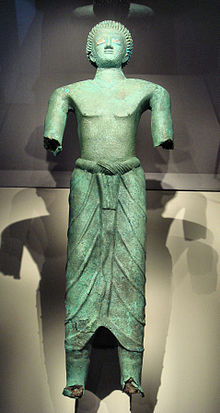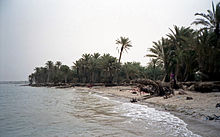| About Yemen |
|
|
| |
History
Yemen has long existed at the crossroads of cultures. It linked some of the oldest centres of civilization in the Near East by virtue of its location in South Arabia.
Between the 12th century BC and the 6th century AD, it was home of the Minaean, Sabaean, Hadhramaut, Qataban, Ausan, and Himyarite kingdoms, which controlled the lucrative spice trade, and later came under Byzantine and Persian rule.[11]
In the 5th century AD, the Himyarite king Abu-Karib Assad converted to Judaism after expanding his kingdom to include most of the Arabian peninsula and parts of East Africa. Following intervention by the Byzantines and the Ethiopians, Christianity was briefly re-established in the kingdom under the leadership of Abraha. In the 7th century, Islamic caliphs began to exert control over the area. After this caliphate broke up, Yemen came under the control of many dynasties who ruled part, or often all, of South Arabia Mecca and most of Oman and even some parts of Gujarat in India during the rule of Queen Arwa |
 |
|
| |
Geography
Yemen is located in Western Asia, in the southern half of the Arabian Peninsula, bordering the Arabian Sea, Gulf of Aden, and the Red Sea. It lies south of Saudi Arabia and west of Oman, between latitudes 12° and 19° N and longitudes 42° and 55° E.
A number of Red Sea islands, including the Hanish Islands, Kamaran, and Perim, as well as Socotra in the Arabian Sea, belong to Yemen. Many of the islands are volcanic; for example Jabal al-Tair had a volcanic eruption in 2007 and before that in 1883.
At 527,970 km2 (203,850 sq mi), Yemen is the world's 50th-largest country. It is comparable in size to Thailand and larger than the U.S. state of California. Yemen is situated at 15°N 48°E.
Tihama on the Red Sea near Khaukha
Until the signing of the Yemen-Saudi Arabia peace treaty in July 2000 [12] Yemen's northern border was undefined; the Arabian Desert prevented any human habitation there.
The country can be divided geographically into four main regions: the coastal plains in the west, the western highlands, the eastern highlands, and the Rub al Khali in the east.
The Tihamah ("hot lands" or "hot earth") form a very arid and flat coastal plain along Yemen's entire Red Sea coastline. Despite the aridity, the presence of many lagoons makes this region very marshy and a suitable breeding ground for malaria mosquitoes. There are extensive crescent-shaped sand dunes. The evaporation in the Tihamah is so great that streams from the highlands never reach the sea, but they do contribute to extensive groundwater reserves. Today, these are heavily exploited for agricultural use. Near the village of Madar about 48 km (30 mi) north of Sana'a, dinosaur footprints were found, indicating that the area was once a muddy flat. |
 |
|
| |
Foreign relations
The geography and ruling Imams of North Yemen kept the country isolated from foreign influence before 1962. The country's relations with Saudi Arabia were defined by the Taif Agreement of 1934, which delineated the northernmost part of the border between the two kingdoms and set the framework for commercial and other intercourse. The Taif Agreement has been renewed periodically in 20-year increments, and its validity was reaffirmed in 1995. Relations with the British colonial authorities in Aden and the south were usually tense.
The Soviet and Chinese Aid Missions established in 1958 and 1959 were the first important non-Muslim presence in North Yemen. Following the September 1962 revolution, the Yemen Arab Republic became closely allied with and heavily dependent upon Egypt. Saudi Arabia aided the royalists in their attempt to defeat the Republicans and did not recognize the Yemen Arab Republic until 1970. At the same time, Saudi Arabia maintained direct contact with Yemeni tribes, which sometimes strained its official relations with the Yemeni Government. Hundreds of thousands of Yemenis found employment in Saudi Arabia during the late 1970s and 1980s. |
 |
|
| |
|
| |
|
|
|
| Sponsors & Supporters |
|
|
|
|
| Media Partners |
|
|
|
|
| 1st & 2nd Int’l Conferences |
|
|
|
|
| 3rd & 4rth Int’l Conferences |
|
|
|
|